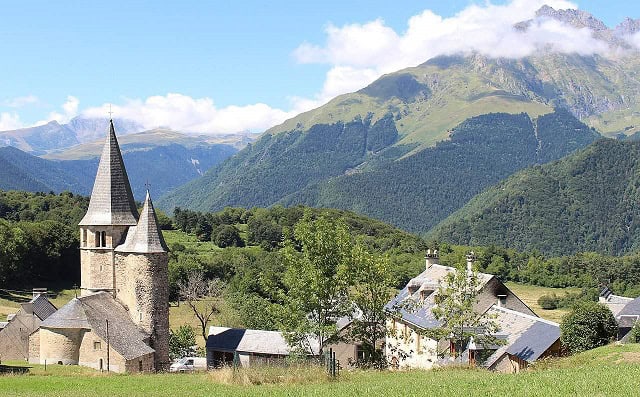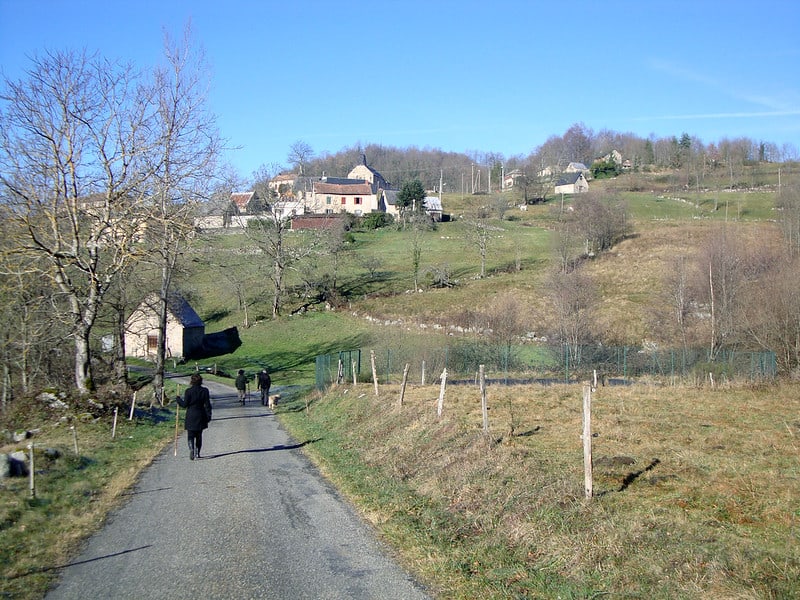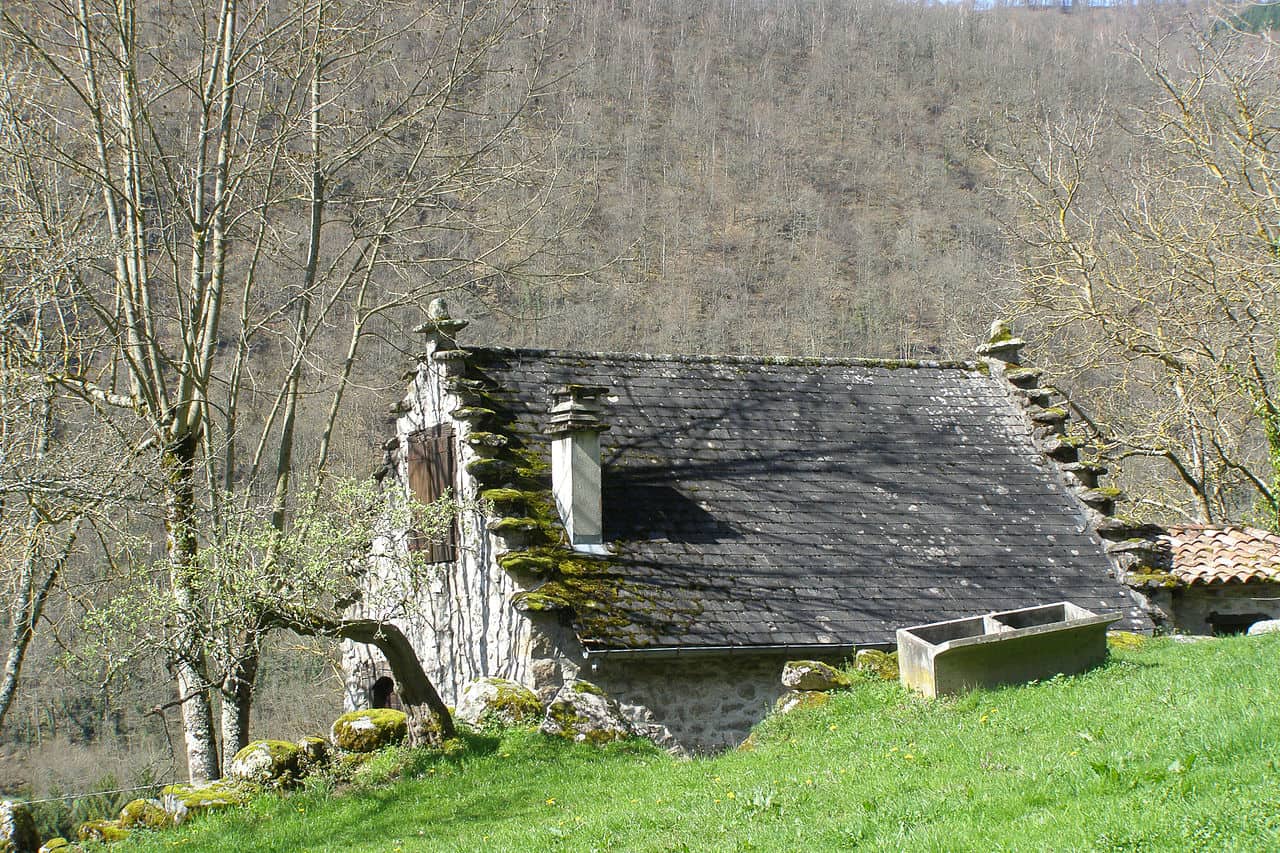| 1 | Pyrenees: natural bear country |

France generally isn’t the first country that comes to mind when you think of bears. The first thought is normally a Canadian bear hunting a moose, or a Russian bear sitting at the dinnertable with its family, but there’s one exception to the rule: the high mountain chain of the Pyrenees. These hills straddle the border between France and Spain, with Andorra tucked away as an island in the middle. They range in height from 800 metre lowlands to the 3404 metre tall Mount Aneto.
Rather than a unique subspecies, the Pyrenees bears are simply Eurasian brown bears (ursus arctos arctos) like in Bulgaria or Finland. In France, they’re the only surviving brown bears, but Spain has a separate endangered colony in the northwest, residing in the Cantabrian mountains hundreds of miles away.
The Pyrenees has two clearly divided subpopulations of bears. As of late 2019, 46 bears were located in the central Pyrenees, while 6 live in a pool in the western Pyrenees. Being separated by the treacherous Pic du Midi de Bigorre and Néouvielle ridges, these pools rarely interact, except for truly epic migrations by male bears.
In the late 1990s, the Pyrenees almost lost its entire bear population. Only 4 bears remained, until the government reintroduced a dozen from Slovenia. Today, the reintroduction scheme is still ploughing ahead, but so too are battles with protesting farmers.
| 2 | Their history stretches back forever |

Brown bears have existed in the Pyrenees for as long as the species has existed. In 1923, a cave was discovered near Montespan containing a treasure trove of fossils, dating back an estimated 25,000 years. It’s rumoured that the Pyrenees themselves were named after an ancient bear tale, where a beautiful princess called Pyrene lived along a towering mountain range dividing France and Spain. One day, she fled into the mountains and was mauled by a savage bear, causing Hercules to name the range in her honour.
By the 1800s, individual bears were being given their own names. In Vallée d’Ossau in the high western Pyrenees, a plaque dedicates itself to a 3 year old bear named Dominique: “Farewell poor Dominique, killed on the farm of Estibère on the 7th June 1848“. This Pyrenees bear was given a funeral, and had a helmet placed on its head like a soldier. On the Spanish side, Pyrenees bears were viewed as God’s dogs, who could understand everything a human said perfectly.
By the 1850s, a famine had struck Ariege, and to get the economy moving again, the Pyrenees became a global hub of dancing bear trainers, who commonly exported their bears to America. This was such a thriving trade that by 1863, the French Interior Ministry created an official registry of bear trainers, issuing 515 permits over the next 50 years. Bowling, juggling, and playing dead were all part of the bears’ repertoire.
| 3 | The decline |

By the 1880s, the Pyrenees village of Ercé boasted 50 certified bear trainers, and eventually created a special bear academy to teach young cubs. The first downside was the extreme cruelty involved, including helmets that clasped down on the bear’s jaws and metal rings inserted into their noses. The second was that defensive mother bears had to be slaughtered to seize the cubs.
One fantastical but true story happened in 1905, after the official separation of the French church and state. This division enraged traditional villagers, and when a state official arrived on March 6th 1906 to inventory the church’s wealth, 3 righteous priests joined forces with 300 angry villagers and 3 gigantic chained bears to block the entrance. The pictures can still be seen in a bear museum in Ercé village hall.
Thanks to the dancing bear trade, there were only 150 bears left in the Pyrenees by the turn of the 20th century. By now, bears were a distant memory in other French mountain ranges like the Alps and Massif Central. Apart from hunting and kidnapping, the main death knell was urbanisation, as roads were built in formerly remote valleys which were once perfect for bears, and mining colonies were constructed high on rugged hillsides.
By 1954, only 70 bears remained in the Pyrenees, and by 1970, they were down to an estimated 40. The French government half-banned bear hunting in 1962, before outlawing it for good in 1973. Were they too late?
| 4 | The reintroduction |
In 1993, both France and Spain signed up to the EU’s Life Program, which intended to restore lost animal fauna to the European countryside. They wasted no time, and between May 1996 and May 1997, three brown bears were captured from Slovenia, and released in the French Pyrenees near the sleepy village of Melles. The first female was called Ziva, meaning “Life” in Slovenian, while the second was named Mellba after the village. Joining them was an intimidating hulk of a male bear called Pyros, who weighed 550 pounds and whose name was a combination of Pyrenees and the nearby village of Fos.
To alleviate farmers’ worries, the French government promised a generous system of compensation for lost sheep, and a free Patou dog for all, a particularly ferocious breed used to protect livestock. Who could say no to that? But while Ziva was a calmer, shier bear who still survives in the Pyrenees today, Mellba embarked upon a sheep-devouring rampage within weeks.
The slogan Non Au Ours (No to Bears) was commonly sighted on roads and signs, occasionally with teenagers spraying “oui” over the “non”. Demonstrations in Foix called for every last bear to be shot, and recommendations of electric fencing by bureaucrats in Paris were mocked by farmers who mostly used high altitude pasture. In 1997, Mellba charged a pig hunter who came between her and her cubs. It may have been a bluff, but the man shot Mellba dead, and her cubs vanished into the mountains.
| 5 | Protests gather pace in 2006 |

The next big drama came in 2004, when the last surviving native female bear was shot in the head, at a close range of 5 metres. Her name was Chanelle, and the perpetrators were 6 wild boar hunters, who were prosecuted, but ultimately judged to have acted in self defence.
Making matters worse, the three Slovenian bears had failed to breed enough. The Pyrenees government announced that they would release 5 new bears, and chose the village of Arbas near Ariège as the grand release site. April 1st 2006 was the date, but instead of a joyous celebration, the town hall exploded with vicious protests. Hundreds of angry farmers descended from the hills and smashed everything in sight. It took 80 gendarmes to control the furious crowd, who hurled deer blood at the walls and even the local mayor.
Even the celebratory wooden bear structure was knocked over and burnt. 10 protesters were fined 7000 Euros each, and the bears were set loose anyway, which this time were 4 Slovenian females and 1 Slovenian male called Balou. The most extreme protesters had taken to placing jars of honey by roadsides, laced with glass shards and labelled with “Caution: anti-bear poison”. However, the only bear death that did happen was accidental, as Palouma the bear plummeted off a high cliff just a few months later.
The protesters won a temporary victory, as the French government abruptly cancelled 14 of the next 15 bears scheduled for release. Before the fresh 5 were released, it was estimated that 14-18 bears were now living in the Pyrenees.
| 6 | Pyros the superdaddy |
Over 25 years of the big Pyrenees bear comeback, no bear has earned more publicity than the 550 pound Pyros, who was born in Slovenia in 1990 and transported to a whole new mountainous playground on May 2nd 1997. He was the original Slovenian male, while the other two 1997 bears were females, and from day 1, he was already a feisty bear.
The video of his release shows him charging out of his cage, instantly breaking through a wooden fence, and vanishing into the murky woods. He was rapidly spotted near villages, with no fear of human beings, and in 2000 he faced accusations of massacring 7 sheep in a pasture near Bordères-Louron (though he never stood trial). In 2002, Pyros wandered into a field of 200 sheep and devoured one on the spot, and his other favourite hobbies included scratching his back against a tree (2011 camera footage).
But his main boast was his sexual dominance, which was so unbreakable that Balou, the 2006 male bear, was forced to roam the central Pyrenees all alone. From 1997 to 2014, Pyros fathered almost 100% of the Pyrenees’ new bears cubs, reaching 20 cubs between his offspring and their offspring. These included Medved and Néré, whose mothers were the original female Ziva.
Pyros also mated with his own daughter. Genetic testing showed that he was both daddy and granddaddy to one cub, and there was heavy speculation in 2014 that Pyros would have to be castrated to protect the gene pool diversity. Pyros has now been missing since April 2017, at which point he was 28 years old.
| 7 | Goiat the maniac bear |
From 2006 to 2016, no new bears were released in the Pyrenees, but newborn cubs continued to rise nicely, from 4 in 2009 to 10 in 2016. The overall population rose to 29, and now, the government announced that a new male bear would finally be imported from Slovenia to counteract the genetic dominance of Pyros. On July 6th, a 10 year old, 450 pound bear was released on the Spanish side of the border. His name was Goiat, which translates to “bachelor” in the local Catalan dialect.
Within one week, Goiat had crossed into France, and despite being 100 pounds lighter than Pyros, Goiat turned out to be a particular maniac. In September 2016, farmer Hugo Jauze found two of his sheep dead, close to Goiat’s last known location. On April 14th 2018, Goiat hunted a horse near the border of Spain, having killed three horses in 2017 – he seemed to have found a nice hunting niche for himself. Three weeks earlier, he had done what bears do best and raided 2 beehives, just days after exiting hibernation. Goiat “seemed to ignore the borders”, and by July 2018, there were calls for him to be removed from the Pyrenees altogether. That summer, Goiat was responsible for 30-40% of all brown bear attacks across the Spanish-French border.
By 2018, something worse happened: his GPS collar started to weaken! Footage was uploaded to youtube of a helicopter stalking Goiat on a mountainside, and on July 16th 2018, Goiat was captured in France and fitted with an all new GPS collar. As of 2021, Goiat is still roaming the Pyrenees.
| 8 | Protests go insane |
2016 was the year when the steadily simmering protests finally came to a head. The final straw came in 2018, with two new female bears called Claverina and Sotrina, whose names translate to “heiress” and “little sister”. Instead of the 10,000KM bear convoy by car, these bears were forced to be airlifted into France in order to circumvent a roadblock installed by 150 rifle-wielding farmers.
Protests reached a new level of bitterness. Farmers took to dropping dead sheep carcasses outside of government buildings, leaving red trails of blood as policemen watched on. Signs were planted everywhere saying “no to bears, safety for the Pyrenees”, and “bears, ruin of the rural world”. Many farmers pledged to shoot bears on sight, even though that had been illegal since 1962. Environment minister Francois de Rugy was caught in a farmers’ roadblock and threatened with guns. One of the largest protests took place in the Spanish town of Ainsa in August 2019, where the sound of ringing cowbells was deafening. Some erected STOP roadsigns with sad-looking teddy bears tied to them.
In the first seven months of 2019, French farmers requested compensation for bear attacks 214 times, compared to 167 times in the same period of 2018, and 53 in 2015. At one point, 20 local mayors banned “wandering bears” from their municipalities, which the French high court overturned. The bear wars were well and truly heating up.
| 9 | Bear chases sheep off cliff |

One of the most enraging incidents for farmers happened in July 2017, right on the French-Spanish border. A farmer living in Couflens, France walked over to his 209-strong sheep flock one morning to find them lying at the foot of a 200 metre cliff over the Spanish border. 169 were dead, and 40 more dead sheep were found below a cliff in France.
It turned out that a bear had charged and devoured one of the sheep, spooking the rest of the flock into fleeing and flying off the cliff at high speeds. Bear fur was discovered on one of the dead sheep, but infuriatingly for the farmer, many of the sheep didn’t quality for bear damage compensation. The distraught farmer was forced to euthanise many of his twitching, barely alive sheep with his own knife.
At first, Goiat the maniac bear was blamed, before his GPS tracking collar proved that he was elsewhere in the Pyrenees. The exact same thing happened on July 2nd 2016 when 125 ewes were chased off a cliff in the Hautes-Pyrenees province. It was caused by the sheep’s natural herd instinct, to follow their fellow sheep unquestionably. Turkey had its own incident back in 2005, where 600 sheep plunged off a cliff, but the majority were saved by the cushioning dead bodies of the first few. The moral of the story: keep your sheep away from cliffs.
| 10 | Current Pyrenees situation |
Where do the Pyrenees bears stand today? 2020 was a year of both happiness and misfortune, as in April, it was announced that the Pyrenees bear population now numbered 52, the most since 1970 and a strong increase of 12 on 2018.2019 saw 10 cubs enter the world from 5 separate mothers, and while proof is difficult to come by in the vast and treacherous mountain terrain, the last year with no new cubs was believed to have been 2008.
2009 saw 2 cubs, 2011 and 2012 saw 4 each, before 2016 and 2017 saw 10 apiece. The protests calmed in January, when President Macron visited the Pyrenees and promised farmers personally not to introduce any more bears.
By June though, the bullet-ridden corpse of a 5 year old male bear had appeared near a ski station in Ariege, close to the Spanish border. Authorities vowed to press charges, but on November 29th, two bears were shot dead in Spain on the very same day. The killer of the first was a hunter who claimed to have mistaken the bear for a wild boar, while the second bear was Sarousse, a 21 year old female, who was shot by hunters when she advanced in an “aggressive manner”. In January 2021, wildlife organisations ordered Macron to replace the dead bears, forcing him to break his promise. Farmers then became even angrier when the high court ruled in February 2021 that shooting was illegal even to scare bears.
The story of the Pyrenees bears isn’t over yet – we’re only living through the middle chapters.

Leave a Reply